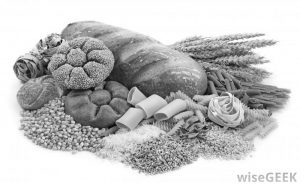Logan Williams, Staff Writer
Whenever I mention carb cycling, I usually get asked three questions. What is carb cycling? How do you do it? Is it safe?
Before I get into what carb cycling is, I need to explain what a carbohydrate is. There are four basic forms of energy: fat, protein, carbohydrates, and alcohol. Each of the four groups mentioned contain what we call calories. Calories, of course, are the energy content in food.
In the case of carbohydrates, they are starchy forms of energy that break down into glucose that the body uses to fuel muscles and the mind.
So what foods contain carbohydrates? Grains like bread and rice, added and natural sugars, and starchy vegetables like potatoes.
With sources of carbohydrates in mind, lets look at the two forms of carb cycling. There’s carb cycling as a lifestyle and as a tool in training regiments.
Carb cycling as a lifestyle is a more relaxed way of watching the amount of carbohydrates taken into your diet. This choice is for those that want to live a healthier lifestyle and aren’t as concerned about losing weight as they are about maintaining where they currently are.
To make carb cycling a part of your lifestyle, all you have to do is examine the way you are eating from day to day. On days where you eat a lot of bread, and maybe treat yourself to grandma’s famous pecan pie, mentally take a note that this has been a high-carb day. The next day when you wake up, recall that yesterday was a high-carb day, so today should be a low-carb day.
On low-carb days, your goal is to lower the amount of grains and other forms of carbohydrates consumed. This isn’t to say that you should not eat any carbohydrates, but rather than eating four slices of bread, eat two, or eat only one serving of pasta.
Now, since low-carb days call for a lowering of carbohydrate intake, there must be a raise in the intake of other fuel sources to counter balance. On low-carb days you will fill this gap by eating more lean proteins such as chicken, fish, or beef, and increasing your fat intake by consuming healthy fats such as almonds, avocados, and vegetable oil.
As for carb cycling as a training tool, this is to be used only for those trying to lose weight! This form of cycling involves calculating out your daily caloric needs. Let’s use a base of 2,000 calories.
On a high-carb day, 50 percent of calories should come from carbohydrates, 30 percent from protein, and 20 percent from fat. For your daily need, this would be 1,000 calories coming from carbs. But just how many grams of carbs is 1,000 calories? Well, for each gram of carbohydrate, there are four calories. So doing the math, 250 grams of carbs are needed to reach 1,000 calories.
As for the low-carb days, 30 percent of calories should come from carbohydrates, 40 percent from fat, and 30 percent from protein. In the case of 2,000 calories, that would be 600 calories from carbs which would be 150 grams.
Note: The amount of carbohydrates needed will vary from the example, going up or down depending on your caloric need.
As long as no extreme measures are taken, carb cycling is a perfectly safe way to lose or maintain weight. What this means is, don’t try to completely eliminate carbohydrates from your diet. In fact, scientists say that the human mind needs 100 grams of carbohydrates a day to function properly. So, make sure you keep carbohydrates in your diet, and try to get quality carbs from fruits, vegetables, and whole grains.
So there it is, another tool to add to the fitness toolbox. As always, happy training.
Leave a Reply